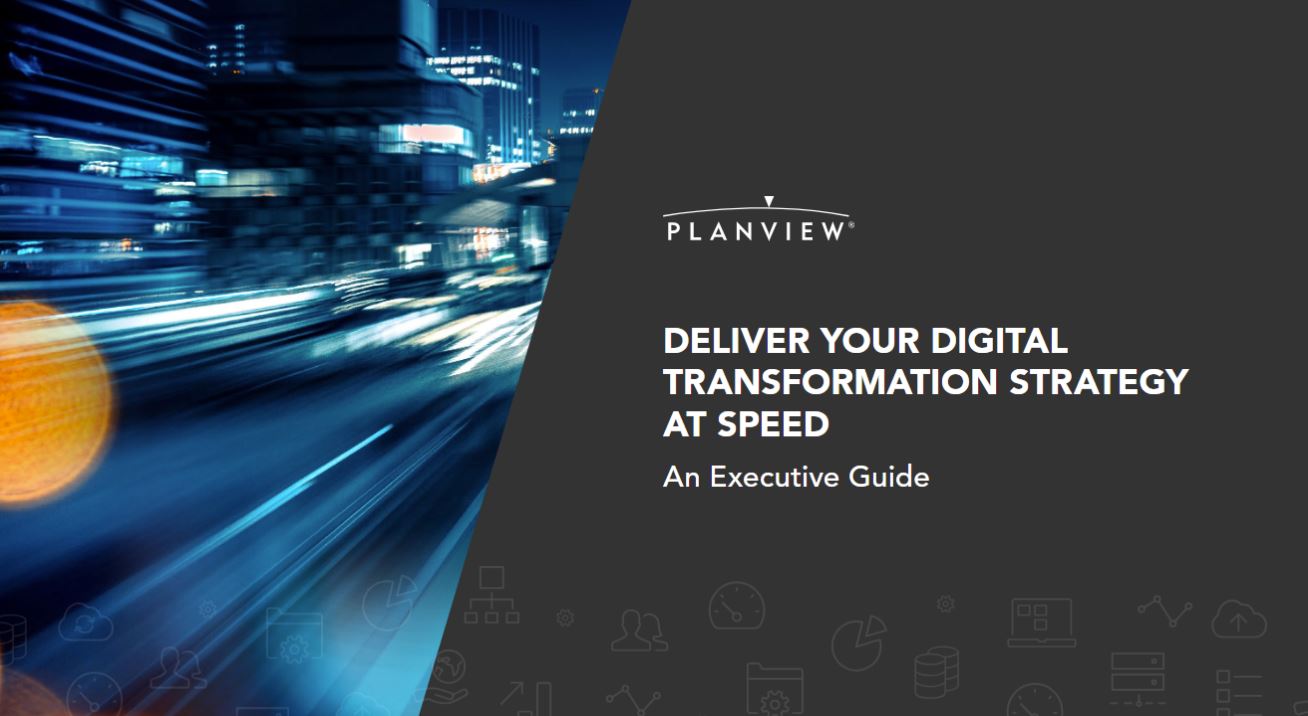
The process of digital business transformation begins at home, in your organization, and involves technical, operational, and cultural changes that only you can lead. The goal is to create something new, something that connects the digital and physical spheres and enables you to bypass your competition. This requires an ability to connect strategy, planning, execution, and delivery for everyone in your organization, as well as be able to adapt, on the fly, based on real-time information.
Throughout this blog series, we have discussed the recommendations for achieving such a transformation from the eBook, “Deliver Your Digital Transformation Strategy at Speed: An Executive Guide,” focusing specifically on the benefits of replacing traditional methodologies with automated processes. As we have now come to the final part of this series, it’s a perfect time to review all we have discussed. Before reading ahead, be sure to catch up on any of the previous parts of this series you may have missed:
- Part 1: An Executive’s Guide to Measuring Digital Transformation
- Part 2: An Executive’s Guide to Delivering on Strategy in a Digitally Connected World
- Part 3: An Executive’s Guide to Driving Innovation
- Part 4: An Executive’s Guide to Making Informed Investment Decisions
- Part 5: An Executive’s Guide to Executing Faster and Increasing Productivity
Part 1: Measuring digital transformation
To successfully undergo digital transformation means creating unprecedented levels of coordination across the business that enable greater visibility into work and improved accuracy of initiatives. Sure, this may be a serious undertaking, but the financial gain and increased market share to be realized are real and measurable. To measure digital transformation:
- Establish “unprecedented levels of coordination” to have more accurate data and insights that tie into the bigger picture (something you can actually see and manage)
- Adopt an automated solution that provides a strategic dashboard to gain control over and properly measure changes through real-time visibility into KPIs
- Adapt to new competitors and the rapidly changing marketplace through your automated processes, which will ultimately demonstrate the results and benefits of your digital transformation
Part 2: Deliver on strategy in a digitally connected world
Only 60% of strategic initiatives meet goals because for many organizations, “strategic planning” remains to be the mere documentation of strategic statements stored in numerous slide decks, spreadsheets, and the like. These methods do not lead to meaningful results.
Instead, your organization should use consolidated, visual roadmaps that will not only enable you to translate strategy on an organization-wide scale, but will be the link between strategy and investments, products, services, and outcomes that drive digital transformation.
Part 3: Drive innovation and get new products and services to market quicker
Innovation is what drives digital transformation, and in today’s digital world, automation is a must. In order to speed up your processes, you must equip your teams with the abilityto deliver to the market on time. To do so:
- Absorb external information and shift your internal focus to creating room and budget for innovation, embracing risk, and failing fast
- Synthesize all data by automating your internal innovation processes (getting rid of all those spreadsheets) in order to choose and manage the right ideas
- Start working smarter, not harder, by leveraging forward-thinking talent, equipped with automated tools to create consistent, repeatable delivery of products
Part 4: Start making more informed investment decisions
According to HBR, “only 11% of firms have the resources they need for their company’s strategic priorities,” and your organization can be one of them. In order to start making more informed investment decisions and speed your strategic funding and resource allocation, you must:
- Put an end to manual portfolio analysis that causes a lot of wasted time and money. Gain access to the right data at any time through automated processes.
- Stop saying yes to everything. Rather than approving each initiative in the hopes one will be successful, conduct an intelligent analysis within the context of the current portfolio. You will then be able to pivot your portfolio quickly with rapidly changing technology and new competitors entering the market on a daily basis.
- Reap the benefits. By following the above tips you can not only reduce costs, but also balance the portfolio and make faster, more informed trade-off decisions.
Part 5: Execute faster and increase productivity
Start by looking at the agility of your organization and provide employees with solutions that fit both how they work today and will in the future. They should be able to select the right tools and adapt their methodologies to the work, as opposed to the other way around, all while ensuring that everyone is contributing to the broader strategy. To do so:
- Don’t demand a single approach, tool, or methodology;
- Adopt tailored solutions that reflect and automate the wide range of work methodologies; and
- Better balance planned and unplanned work.
By employing all of the above recommendations, you can achieve digital transformation at speed and start reaping the rewards. For more details on these recommendations, check out the eBook, “Deliver Your Digital Transformation Strategy at Speed: An Executive Guide,” and visit www.planview.com to demo such automated solutions that can help you get started.






